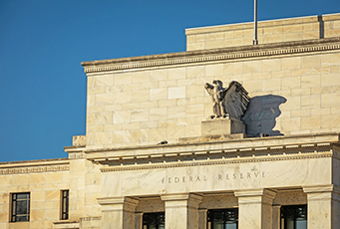If the Fed “tapers”, what signal does that send to investors? How does the stock market react when the Fed buys or sells assets? If you knew the answers, should that information change your investment portfolio?
Recently there has been increased debate about rolling back economic stimulus as the U.S. economy continues to recover from the COVID-19 pandemic. In fact, on November 3rd, Federal Reserve Chair Jerome Powell announced that the Fed would begin some of this rollback in the form of a “taper” later this month.
But what does the Fed “tapering” actually mean? Tapering refers to the Fed systematically decreasing the amount of assets it is purchasing each month. This can have a meaningful impact on the economy. Let’s take a look at how we got here, why the Fed is tapering, and what it means for the stock market.
Economic Stimulus
The Fed has two notable ways of stimulating an economy: lowering the Federal Funds Rate and making large-scale asset purchases, predominately of fixed income securities (also referred to as quantitative easing). These tools are designed to lower short- and long-term interest rates, respectively, in order to make borrowing money cheap. The hope is that this cheaper money will stimulate spending and boost the economy.
Quantitative Easing
The Fed buying bonds is a way to reduce longer-term interest rates. As the Fed purchases more bonds, there are consequently fewer bonds available in the market. This will cause existing bonds to increase in price. Since the price of bonds and interest rates are inversely correlated, this causes longer-term interest rates to decrease.
In addition to lowering interest rates, quantitative easing also increases the supply of money in the economy, which helps provide liquidity during times of uncertainty. Further, this policy helps build confidence in the markets because it shows the Fed is willing to step-in and help during an economic downturn.
Covid-19 Recession
When the COVID-19 recession began, the Fed lowered the Federal Funds Rate to essentially 0% and started aggressively purchasing longer-term bonds. Since June 2020, the Fed has been buying $80 billion of Treasury securities and $40 billion of agency mortgage-backed securities (MBS) on a monthly basis. This is the largest asset purchase program in the Fed’s history - even greater than that of the 2008-2009 Great Financial Crisis. Both of these policies helped the U.S. economy endure the recent recession and recover faster.
The “Taper”
Fed officials feel the economy has rebounded enough to start rolling back the stimulus they have provided. Their first step is to taper. The Fed recently stated that they will start to reduce the amount of bonds they are buying each subsequent month by $15 billion ($10 billion in Treasuries and $5 billion in MBS).
It’s important to note that this does not mean the Fed is selling all of the securities it has already purchased. They are instead reducing the amount that they are continuing to purchasing each month. At this rate, they should be done making purchases by the middle of 2022. However, this plan is not written in stone and will be adjusted if necessary.
What it Means for the Stock Market
So far, the market has reacted favorably to the Fed’s taper announcement. The Fed has been fairly transparent in communicating the timeline, so market participants have been expecting this for a while. The expectation of the taper has likely been “priced in” to the current stock market value. The Fed will need to be cautious and observant of how markets are reacting during this process to make sure they avoid a situation like the 2013 Taper Tantrum. Back then, the Fed announced it would start tapering, which caused a reactionary panic and resulted in a sell-off in the stock market.
It’s hard to say how the stock market will react over the next couple of years because of the many variables involved. For one, Jerome Powell’s term as the chair of the Fed will end in February 2022. If President Biden appoints a new chair then it could cause uncertainty. Another variable is what will happen after the tapering. The next step would be for the Fed to begin raising the Federal Funds rate. The timing and pace of rate increases will be closely watched.
Summary
The Fed tapering is nothing new. However, the rate at which they have been purchasing assets is more than we have ever experienced as an economy, so what happens from here is very important. It’s certainly a good sign that the economy is doing well enough that the Fed thinks they no longer need to provide support. Nevertheless, as an investor, you should prepare for volatility because of the uncertainty ahead. Be sure to speak with your financial advisor to ensure you have a solid plan in place.
Schedule a Consultation
We have helped our clients answer these questions and more. If you want a clear understanding of your financial future, and need help making changes to reach your goals, schedule a consultation and we can get started.
Please remember that past performance may not be indicative of future results. Prior to implementing any investment strategy referenced in this article, either directly or indirectly, please discuss with your investment advisor to determine its applicability. Any corresponding discussion with a Bedel Financial Consulting, Inc. associate pertaining to this article does not serve as personalized investment advice and should not be considered as such.
Recommended Articles
2026 Market Outlook: Themes, Risks, and the Reality of Uncertainty
Several firms, including WisdomTree, BondBloxx, and...
Private Equity and M&A in a Low-Rate World
Deal flow is the stream of business proposals, investment...





